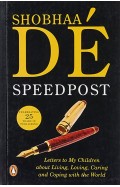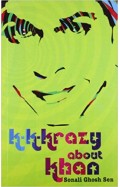Thinking Through Islamophobia: Global Perspectives
By: S Sayyid And Abdoolkarim Vakil
-
Rs 1,296.75
- Rs 1,995.00
- 35%
You save Rs 698.25.
Due to constant currency fluctuation, prices are subject to change with or without notice.
Since September 11 the term Islamophobia has entered common parlance across the globe. Widely used but diversely and inconsistently defined and deployed, Islamophobia remains hotly disputed and frequently disavowed both as word and concept. To its supporters it names a defining feature of our times and is an important tool to highlight injustices faced by and specific to Muslims, but its effectiveness is weakened by lack of agreed meaning and of clarity in relation to such terms as racism and orientalism. To its detractors Islamophobia is either a fundamentally flawed category or, worse, a communitarian fig leaf behind which 'backward' social practices and totalitarian political ambitions are covered up. The backdrop to these debates and more generally to the mobilizations and contestations, to which they give expression, is a succession of 'moral panics' centred on the figure of the Muslim. Adopting a global perspective this collection is conceptually framed in terms of four arenas which provide the four distinct contexts for the problematization of Muslim identity, and the ways in which Islamophobia may be deployed. Drawing on diverse fields of disciplinary and geographical expertise twenty six contributors address the question of Islamophobia in a series of interventions which range from large and sustained arguments to illustrations of particular themes across these contexts: 'Muslimistan' (broadly the OIC member countries); states in which Muslims either form a minority or hold a socio-economically subaltern position but in which the Muslim minority cannot be easily dismissed as recent arrivals (such as India, Russia and China as well as Thailand); lands in which Muslims are represented as newly arrived immigrants (Western plutocracies), and the regions in which the Muslim presence is minimal or virtual and the problematization of Muslim identity is vicarious. Rejecting both uncritical transhistorical uses of the term Islamophobia and no less uncritical dismissals of the term the collection navigates a course in betwixt and between these two extremes pioneering a path to a series of investigations of Islamophobia that are predicated in the articulation of Muslim agency as its necessary ground.
| Book | |
| What's in the Box? | 1 x Thinking Through Islamophobia: Global Perspectives |
Since September 11 the term Islamophobia has entered common parlance across the globe. Widely used but diversely and inconsistently defined and deployed, Islamophobia remains hotly disputed and frequently disavowed both as word and concept. To its supporters it names a defining feature of our times and is an important tool to highlight injustices faced by and specific to Muslims, but its effectiveness is weakened by lack of agreed meaning and of clarity in relation to such terms as racism and orientalism. To its detractors Islamophobia is either a fundamentally flawed category or, worse, a communitarian fig leaf behind which 'backward' social practices and totalitarian political ambitions are covered up. The backdrop to these debates and more generally to the mobilizations and contestations, to which they give expression, is a succession of 'moral panics' centred on the figure of the Muslim. Adopting a global perspective this collection is conceptually framed in terms of four arenas which provide the four distinct contexts for the problematization of Muslim identity, and the ways in which Islamophobia may be deployed. Drawing on diverse fields of disciplinary and geographical expertise twenty six contributors address the question of Islamophobia in a series of interventions which range from large and sustained arguments to illustrations of particular themes across these contexts: 'Muslimistan' (broadly the OIC member countries); states in which Muslims either form a minority or hold a socio-economically subaltern position but in which the Muslim minority cannot be easily dismissed as recent arrivals (such as India, Russia and China as well as Thailand); lands in which Muslims are represented as newly arrived immigrants (Western plutocracies), and the regions in which the Muslim presence is minimal or virtual and the problematization of Muslim identity is vicarious. Rejecting both uncritical transhistorical uses of the term Islamophobia and no less uncritical dismissals of the term the collection navigates a course in betwixt and between these two extremes pioneering a path to a series of investigations of Islamophobia that are predicated in the articulation of Muslim agency as its necessary ground.
Thinking Through Islamophobia: Global Perspectives
By: S Sayyid And Abdoolkarim Vakil
Rs 1,296.75 Rs 1,995.00 Ex Tax :Rs 1,296.75
Zubin Mehta: A Musical Journey (An Authorized Biography)
By: VOID - Bakhtiar K. Dadabhoy
Rs 472.50 Rs 1,050.00 Ex Tax :Rs 472.50
Manning Up: How the Rise of Women Has Turned Men into Boys
By: Kay Hymowitz
Rs 646.75 Rs 995.00 Ex Tax :Rs 646.75
No similar books from this author available at the moment.
No recently viewed books available at the moment.
Zubin Mehta: A Musical Journey (An Authorized Biography)
By: VOID - Bakhtiar K. Dadabhoy
Rs 472.50 Rs 1,050.00 Ex Tax :Rs 472.50
Thinking Through Islamophobia: Global Perspectives
By: S Sayyid And Abdoolkarim Vakil
Rs 1,296.75 Rs 1,995.00 Ex Tax :Rs 1,296.75














-120x187.jpg?q6)













